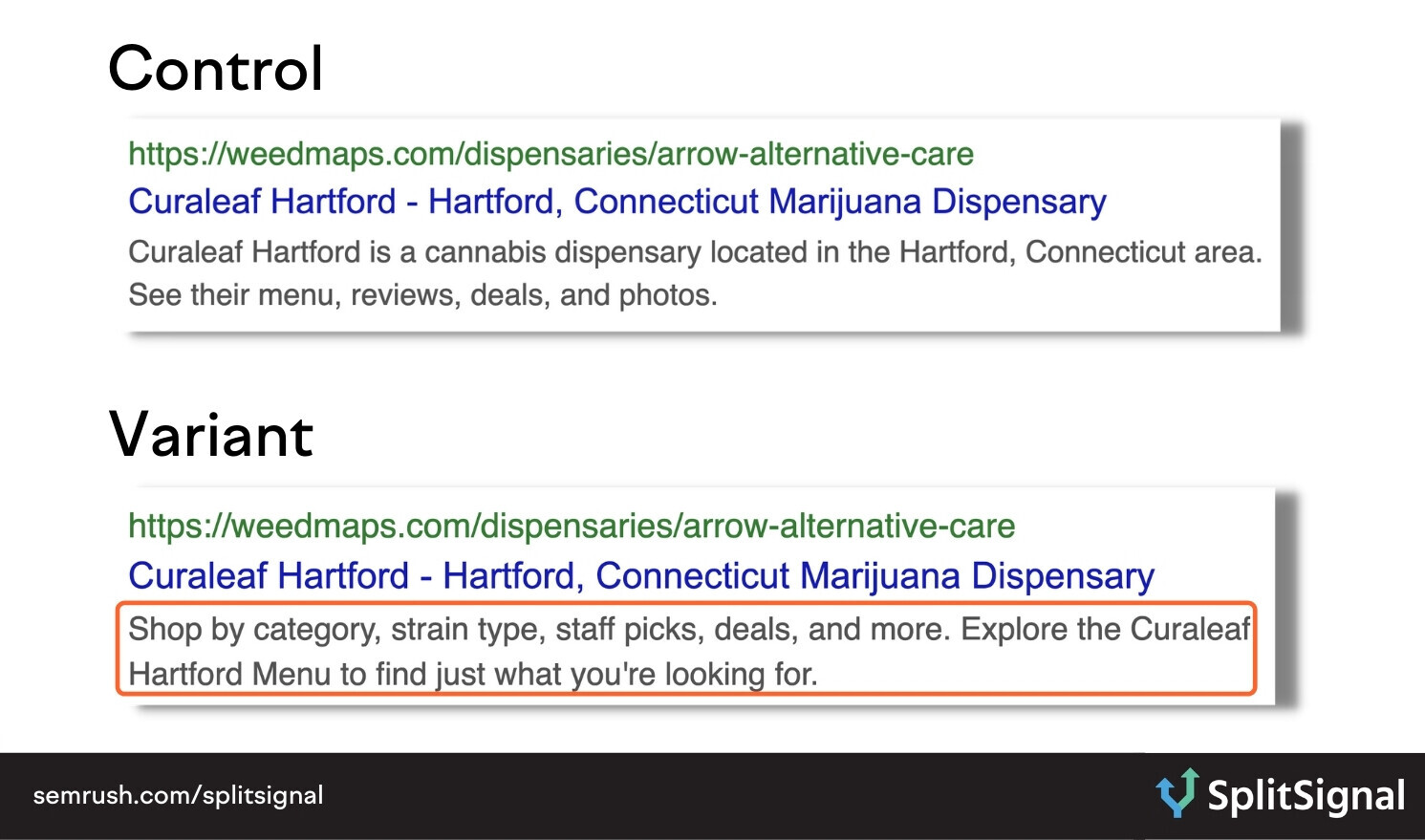Before you start: what do you know about SEO split-testing? If you’re unfamiliar with the principles of statistical SEO split-testing and how SplitSignal works, we’re suggesting you start here or request a demo of SplitSignal.
First, we asked our Twitter followers to vote:

Surprisingly, this time our followers didn’t guess it right. The test result is negative.
Read the full case study to find out why.
The Case Study
Greetings, SEO enthusiasts!
One of the areas we’ve been routinely testing lately is meta descriptions. While once considered highly important, we’ve noticed they have gotten a lot less attention over the years, as search engines removed them as a ranking factor. And, considering a major search engine’s recent moves in rewriting meta descriptions, these tests are becoming more interesting and more compelling at illustrating the value of a well-written, compelling meta description.
Hypothesis
Our hypothesis was pretty straightforward: Could we write a better description than was currently in place to encourage more clicks from users still within the search results?
The Test
We set up our test in SplitSignal.
- Split Pages — Roughly fifty per cent (50%) of the client’s product pages were selected as the test variant, while the remaining pages would serve as the control group.
SplitSignal captured the primary product name from each page and set them as a variable within the new meta description to explore testing new motivational copy as indicated below.

The Results
After running the test for 21 days, we were able to determine that there was a decrease in clicks of 19.9% in the test group. You can observe the decline in clicks (orange line) in the following screenshot from the SplitSignal dashboard:


So, what happened?
As we said in the beginning, the purpose of this test was to once again test the importance of a well-written meta description as it relates to encouraging search engine users to click through to a website.
One of the things we (LOCOMOTIVE) observed in the test was removing certain keywords related to the products, like “cannabis” and “CBD,” which likely made the meta description less relevant in the users’ minds, causing them to skip over it.
So while this test returned a NEGATIVE result, this is useful to us in understanding that the current meta description should be left as-is, meaning we don’t waste countless hours of time, and budget, rewriting thousands (or more) descriptions. That is a positive result in our book!
What do you think? Have you ever implemented something your team felt was the right move, only for it to ultimately be a failure once implemented? Let’s talk about it on Twitter!
Have your next SEO split-test analyzed by LOCOMOTIVE Agency.